Posted by: Clear Advantage in Featured on October 30, 2023
Are you tired of depending on reading glasses? Does going out to a restaurant feel like a chore because you can only see the menu if you hold it far away?
If you don’t want to use visual aids like reading glasses, it may be worth considering vision correction procedures that treat conditions like presbyopia. One such procedure is refractive lens exchange.
Refractive lens exchange (RLE) is a procedure that removes the natural lens of your eye and replaces it with an artificial lens, called an intraocular lens, or IOL. RLE is often used as an alternative to laser eye procedures like LASIK.
However, it can also be a great way to treat presbyopia.
Refractive lens exchange is best for patients at least 40 years old who want to reduce their dependence on glasses or contacts. It works well if you have early cataracts or trouble seeing things up close due to aging.
RLE can improve both distance and close-up vision at the same time. Keep reading to learn more about RLE and if it could be the right vision correction procedure for you!
What is Refractive Lens Exchange?

Refractive lens exchange is a procedure that involves removing the natural lens of the eye and replacing it with an artificial lens or IOL. The natural lens helps focus light onto the back of your eye.
Due to age, the natural lens becomes stiffer and less flexible, making it more challenging to see things up close. As a result, you may need reading glasses when you need to see things in front of you.
Although refractive lens exchange bears a striking resemblance to cataract surgery, it’s slightly different. RLE removes your natural lens before a cataract has the opportunity to form.
Sometimes, you may have a cataract in its early stages removed before it affects your vision during RLE. The IOL put in its place corrects refractive errors like nearsightedness, farsightedness, and astigmatism.
Unlike LASIK, which reshapes the cornea, refractive lens exchange removes the natural lens and replaces it with an IOL to restore clear vision. Without an IOL, you wouldn’t be able to see clearly.
How Does Refractive Lens Exchange Work?
Refractive lens exchange is an outpatient procedure. First, before it begins, you’ll receive numbing eye drops. These eye drops help ensure you won’t feel any pain or discomfort.
Next, your surgeon will create a tiny incision to reach your natural lens and use sound waves in a process called phacoemulsification to soften and break up the lens. Doing this makes it easier to remove and suction out the pieces of the lens.
Then, they will insert your new intraocular lens through the same incision, where it will replace your natural lens. The IOL will unfold into position in the empty lens capsule where your lens was once located. Because the incision is so small, stitches are not necessary.
The procedure takes 15-30 minutes per eye. You can have both eyes done in one visit or at separate times within 1-2 weeks of each other.
Who is a Good Candidate for Refractive Lens Exchange?

Although refractive lens exchange is a fantastic procedure for many patients, it’s not well-suited for everyone. You may be a good candidate for the procedure if:
- You’re 45-60 years old and want to stop using reading glasses
- You aren’t a good candidate for other vision correction procedures like LASIK due to thin corneas or other reasons
- You have early-stage cataracts
- You have refractive errors and want to reduce your dependence on visual aids
- You have healthy eyes
If you could be a good candidate for refractive lens exchange, schedule your appointment at Clear Advantage Vision Center in Portsmouth, NH.
Recovery and Vision After Refractive Lens Exchange
Having refractive lens exchange will change your life and your vision. Before you know it, you’ll be back to the things you love, but with crisper, clearer vision than before.
Many patients experience blurry or cloudy vision for 1-2 days following the procedure. Your vision should stabilize and improve in the weeks following refractive lens exchange.
You’ll need to take the antibiotic and anti-inflammatory eye drops your ophthalmologist prescribes. These eye drops help reduce inflammation and prevent infection while you’re healing.
In the first week after refractive lens exchange, avoid strenuous activities, including lifting anything over ten pounds. Your eye doctor will tell you when it’s safe to return to these activities during your follow-up appointments.
You may find that your eyes are more sensitive than usual, especially around bright lights. You may also find they are watery or dry, but this should go away over time.

Most patients achieve their peak vision about a month after having refractive lens exchange. You may still need reading glasses, depending on the IOL chosen.
Most patients achieve 20/20 or better distance vision, allowing them to reduce their dependence on glasses and other visual aids after RLE. Discuss your visual goals and lifestyle needs with your ophthalmologist before the procedure to have realistic expectations.
RLE can reduce or eliminate the need for glasses or contacts by removing your natural lens and replacing it with an intraocular lens. Think RLE could be right for you?
Find out by scheduling a consultation at Clear Advantage Vision Correction Center in Portsmouth, NH, now! Haven’t you waited long enough to experience the joys of better vision?






